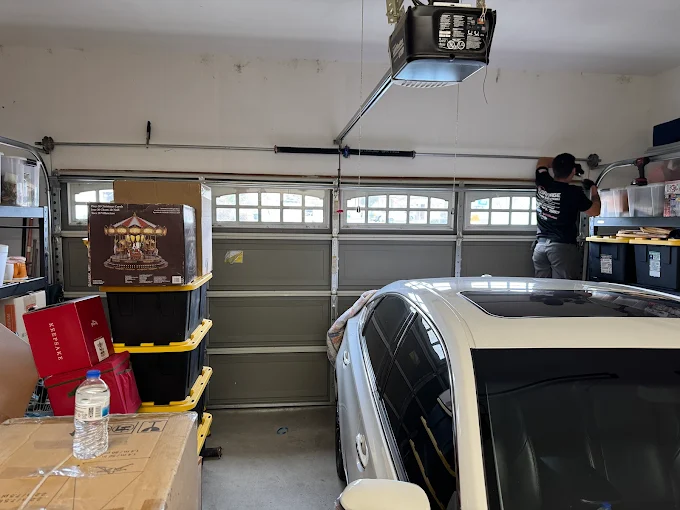
Table of Contents
- Introduction
- Why Cost Estimating Is Crucial for Architects
- Traditional vs. Smart Cost Estimating
- Benefits of Smart Cost Estimating
- Key Elements in Modern Cost Estimating
- How Architects Can Improve Their Estimation Game
- Common Mistakes in Cost Estimating
- Top Tools for Smart Cost Estimating
- Real-World Applications: Cost Estimating in Action
- Final Thoughts
- FAQs
Introduction
Imagine sketching a stunning modern villa only to find out later the client can’t afford it. Frustrating, right? That’s where cost estimating for architects becomes the unsung hero of every successful building project. Whether you’re designing skyscrapers or small homes, getting the numbers right is just as important as getting the angles right.
In today’s fast-paced construction world, smart cost estimating isn’t just helpful—it’s essential. Let’s dive into how this game-changing approach is reshaping modern architecture and why you, as an architect, should care deeply about it.
Why Cost Estimating Is Crucial for Architects
Every project starts with a dream—but dreams need budgets. Accurate building cost estimation ensures that designs align with financial reality. It bridges the gap between creativity and feasibility.
Bringing Vision and Budget Together
As architects, you’re not just drawing lines—you’re solving real-world problems. Your design needs to impress the client, meet codes, and, most importantly, stay within budget.
Avoiding Redesigns and Delays
Ever had to redesign because costs shot up halfway through? That’s what happens when cost estimation is ignored or rushed. Reliable construction cost planning avoids last-minute scrambles and keeps your project moving forward smoothly.
Traditional vs. Smart Cost Estimating
Cost estimating isn’t new. But it’s evolving. Let’s compare the old-school methods with today’s tech-driven approach.
Traditional Estimating Methods
- Manual calculations
- Paper blueprints and notes
- Reliance on experience-based guesswork
- High risk of human error
Smart Cost Estimating Tools
- AI-powered cost modeling
- BIM (Building Information Modeling) integration
- Real-time data syncing
- Automated material take-offs
Bottom line? Smart estimating cuts down guesswork and gives you real-time clarity.
Benefits of Smart Cost Estimating
So what’s in it for you? A whole lot, actually.
1. Accuracy That Saves Time and Money
Smart tools process thousands of data points in seconds, giving you precise results without hours of number crunching.
2. Faster Decision-Making
Quickly compare materials, design choices, and timelines—all from one dashboard. That means faster client approvals and quicker turnarounds.
3. Improved Client Trust
Nothing wins a client like transparency. With detailed estimates, you can walk them through costs confidently, showing you’re on top of your game.
4. Fewer Surprises
Smart estimating helps forecast issues before they explode into budget nightmares.
Key Elements in Modern Cost Estimating
To master cost estimating for architects, you need to understand the core elements that shape it.
Design and Scope Definition
Everything starts with knowing what you’re building. The clearer your scope, the better your estimate.
Material Costs
With global price fluctuations, staying updated on material costs is critical. Smart software pulls live prices to give you up-to-date figures.
Labor and Equipment
Time is money. Smart estimating tools can analyze how long a task will take and what kind of labor or machinery it will need.
Contingencies and Overheads
Unforeseen costs? Always. That’s why modern estimating includes buffer calculations based on historical project data.
How Architects Can Improve Their Estimation Game
Let’s get practical. Here’s how you can step up your cost-estimating skills.
Embrace Technology
Use software like Revit, PlanSwift, or CostX. These tools are built for people like you—visual thinkers with tight deadlines.
Collaborate Early
Don’t wait until the end to bring in contractors or quantity surveyors. Early collaboration helps you catch budget busters before they become deal-breakers.
Keep Learning
The more projects you work on, the better your estimating instincts get. But also take time to learn from peers, online courses, and cost management workshops.
Common Mistakes in Cost Estimating
Even seasoned architects mess up sometimes. Here are the most common pitfalls:
Underestimating Scope
It’s easy to overlook small details—but they can have big price tags.
Ignoring Site Conditions
Sloped sites, access issues, or hidden soil problems can derail even the best estimate.
Skipping Client Priorities
That sleek imported tile your client loves? Yeah, it costs five times more than the local version. Keep their tastes in mind.
Not Updating Estimates
Projects evolve, and so should your estimates. Always revise when the design changes.
Top Tools for Smart Cost Estimating
Let’s talk tech. Here are some tools you can start using today:
1. Revit + BIM 360
For integrating cost with design in real time.
2. CostX
Popular for 3D takeoffs and quick cost modeling.
3. PlanSwift
Drag-and-drop interface for fast, visual estimating.
4. STACK
Cloud-based tool great for team collaboration.
Real-World Applications: Cost Estimating in Action
Let’s say you’re designing a co-working space in London. You use smart software to:
- Upload your 3D model
- Generate take-offs for walls, floors, and fixtures
- Apply live UK material rates
- Collaborate with the contractor on labor timelines
In a few hours, you present a detailed budget to the client. They’re impressed, you’re ahead of schedule, and the project kicks off with full confidence.
That’s the power of smart architectural cost management.
Final Thoughts
Cost estimating isn’t just a technical chore—it’s your design’s reality check. In today’s competitive market, architects who understand cost are the ones who stand out. Smart cost estimating helps you design boldly, plan wisely, and build confidently.
It’s no longer optional. It’s a game-changer.
FAQs
1. What is cost estimating for architects?
It’s the process of predicting how much a building project will cost—including materials, labor, time, and overheads—based on the design and scope.
2. Why should architects handle cost estimation early in the project?
Early estimating helps keep your design realistic, avoid budget overruns, and gain client trust from the start.
3. Can I use free tools for cost estimating?
Yes, some free tools exist, but for larger or complex projects, investing in professional software like Revit or CostX is worth it.
4. How often should estimates be updated?
Anytime there’s a design change, new materials are added, or labor costs shift. Frequent updates ensure accuracy.
5. Do clients really care about detailed estimates?
Absolutely! Clear and accurate cost estimates show professionalism and help clients make informed decisions.




